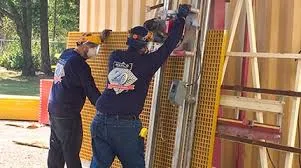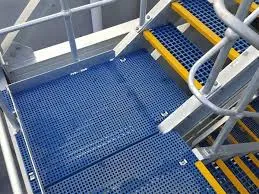
-
 Afrikaans
Afrikaans -
 Albanian
Albanian -
 Amharic
Amharic -
 Arabic
Arabic -
 Armenian
Armenian -
 Azerbaijani
Azerbaijani -
 Basque
Basque -
 Belarusian
Belarusian -
 Bengali
Bengali -
 Bosnian
Bosnian -
 Bulgarian
Bulgarian -
 Catalan
Catalan -
 Cebuano
Cebuano -
 China
China -
 China (Taiwan)
China (Taiwan) -
 Corsican
Corsican -
 Croatian
Croatian -
 Czech
Czech -
 Danish
Danish -
 Dutch
Dutch -
 English
English -
 Esperanto
Esperanto -
 Estonian
Estonian -
 Finnish
Finnish -
 French
French -
 Frisian
Frisian -
 Galician
Galician -
 Georgian
Georgian -
 German
German -
 Greek
Greek -
 Gujarati
Gujarati -
 Haitian Creole
Haitian Creole -
 hausa
hausa -
 hawaiian
hawaiian -
 Hebrew
Hebrew -
 Hindi
Hindi -
 Miao
Miao -
 Hungarian
Hungarian -
 Icelandic
Icelandic -
 igbo
igbo -
 Indonesian
Indonesian -
 irish
irish -
 Italian
Italian -
 Japanese
Japanese -
 Javanese
Javanese -
 Kannada
Kannada -
 kazakh
kazakh -
 Khmer
Khmer -
 Rwandese
Rwandese -
 Korean
Korean -
 Kurdish
Kurdish -
 Kyrgyz
Kyrgyz -
 Lao
Lao -
 Latin
Latin -
 Latvian
Latvian -
 Lithuanian
Lithuanian -
 Luxembourgish
Luxembourgish -
 Macedonian
Macedonian -
 Malgashi
Malgashi -
 Malay
Malay -
 Malayalam
Malayalam -
 Maltese
Maltese -
 Maori
Maori -
 Marathi
Marathi -
 Mongolian
Mongolian -
 Myanmar
Myanmar -
 Nepali
Nepali -
 Norwegian
Norwegian -
 Norwegian
Norwegian -
 Occitan
Occitan -
 Pashto
Pashto -
 Persian
Persian -
 Polish
Polish -
 Portuguese
Portuguese -
 Punjabi
Punjabi -
 Romanian
Romanian -
 Russian
Russian -
 Samoan
Samoan -
 Scottish Gaelic
Scottish Gaelic -
 Serbian
Serbian -
 Sesotho
Sesotho -
 Shona
Shona -
 Sindhi
Sindhi -
 Sinhala
Sinhala -
 Slovak
Slovak -
 Slovenian
Slovenian -
 Somali
Somali -
 Spanish
Spanish -
 Sundanese
Sundanese -
 Swahili
Swahili -
 Swedish
Swedish -
 Tagalog
Tagalog -
 Tajik
Tajik -
 Tamil
Tamil -
 Tatar
Tatar -
 Telugu
Telugu -
 Thai
Thai -
 Turkish
Turkish -
 Turkmen
Turkmen -
 Ukrainian
Ukrainian -
 Urdu
Urdu -
 Uighur
Uighur -
 Uzbek
Uzbek -
 Vietnamese
Vietnamese -
 Welsh
Welsh -
 Bantu
Bantu -
 Yiddish
Yiddish -
 Yoruba
Yoruba -
 Zulu
Zulu
Jan . 15, 2025 00:43
Back to list
frp chimney
Understanding the pivotal role of FRP (Fiber Reinforced Plastic) chimneys in industrial applications is essential for anyone involved in infrastructure development or maintenance. As industries are moving toward more sustainable and cost-effective solutions, FRP chimneys have emerged as a game-changer in the landscape of construction and maintenance.
Building trust in FRP chimneys involves acknowledging the real-world case studies and testimonials that highlight their long-term reliability and cost efficiency. For instance, several petrochemical factories have documented enhanced operational performance and reduced downtime after switching to FRP solutions for their emissions management. Successful implementation stories, documented in industry journals and conferences, provide a blueprint for other companies considering a transition. This narrative not only builds trust in FRP products but also encourages further innovation and adoption across other sectors where volatile emissions and environmental compliance are a concern. Critically, the sustainability aspect of FRP chimneys adds another layer to their appeal. As global attention shifts towards reducing carbon footprints and utilizing environmentally friendly materials, FRP stands out due to its low environmental impact throughout its lifecycle. The manufacturing process of FRP requires less energy compared to traditional materials, and its longevity reduces waste associated with frequent replacements. Additionally, its lightweight properties translate into lower transportation emissions, appealing to companies keen on boosting their green credentials. In conclusion, the comprehensive benefits of FRP chimneys make them an attractive choice for industries looking for durable, efficient, and sustainable solutions. The intricate balance of chemical resistance, mechanical strength, and lightness offers a compelling case for their adoption. With increasing scrutiny on industrial emissions and infrastructure sustainability, FRP chimneys represent not only a practical solution but also an innovative stride towards more responsible industrial practices. As these benefits become more widely recognized, the demand for FRP chimneys is poised to grow, solidifying their place as a cornerstone in modern industrial design.


Building trust in FRP chimneys involves acknowledging the real-world case studies and testimonials that highlight their long-term reliability and cost efficiency. For instance, several petrochemical factories have documented enhanced operational performance and reduced downtime after switching to FRP solutions for their emissions management. Successful implementation stories, documented in industry journals and conferences, provide a blueprint for other companies considering a transition. This narrative not only builds trust in FRP products but also encourages further innovation and adoption across other sectors where volatile emissions and environmental compliance are a concern. Critically, the sustainability aspect of FRP chimneys adds another layer to their appeal. As global attention shifts towards reducing carbon footprints and utilizing environmentally friendly materials, FRP stands out due to its low environmental impact throughout its lifecycle. The manufacturing process of FRP requires less energy compared to traditional materials, and its longevity reduces waste associated with frequent replacements. Additionally, its lightweight properties translate into lower transportation emissions, appealing to companies keen on boosting their green credentials. In conclusion, the comprehensive benefits of FRP chimneys make them an attractive choice for industries looking for durable, efficient, and sustainable solutions. The intricate balance of chemical resistance, mechanical strength, and lightness offers a compelling case for their adoption. With increasing scrutiny on industrial emissions and infrastructure sustainability, FRP chimneys represent not only a practical solution but also an innovative stride towards more responsible industrial practices. As these benefits become more widely recognized, the demand for FRP chimneys is poised to grow, solidifying their place as a cornerstone in modern industrial design.
Next:
Related Products









